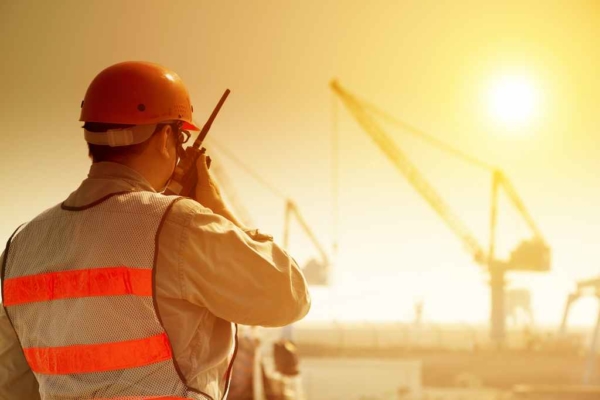For the first time, the U.S. Department of Labor’s Occupational Safety and Health Administration has launched a National Emphasis Program to protect millions of workers from heat illness and injuries. Through the program, OSHA will conduct heat-related workplace inspections before workers suffer completely preventable injuries, illnesses or, even worse, fatalities.
Heat illness affects thousands of indoor and outdoor workers each year and can tragically lead to death. Reducing workplace heat-related illnesses and injuries is a top priority for the Department of Labor, and this National Emphasis Program is a way to immediately improve enforcement and compliance efforts, while continuing long-term work to establish a heat illness prevention rule.
As part of the program, OSHA will proactively initiate inspections in over 70 high-risk industries in indoor and outdoor work settings when the National Weather Service has issued a heat warning or advisory for a local area. On days when the heat index is 80 F or higher, OSHA inspectors and compliance assistance specialists will engage in proactive outreach and technical assistance to help stakeholders keep workers safe on the job. Inspectors will look for and address heat hazards during inspections, regardless of whether the industry is targeted in the NEP.
“Our goal is to make it safe for workers in hot indoor and outdoor environments, so that they can return home safe and healthy at the end of each day,” said Assistant Secretary for Occupational Safety and Health Doug Parker. “Working together, we can ensure workers know their rights and employers meet their obligations in order to protect workers from the growing dangers of extreme heat.”
OSHA’s area offices will engage in outreach to unions, employers in target industries and other organizations committed to advancing protections for underserved workers. The agency’s On-Site Consultation Program, a free and confidential health and safety consulting program for small- and medium-sized businesses, will assist employers in developing strategic approaches for addressing heat-related illnesses and injuries in workplaces.
Last fall, OSHA published an Advance Notice of Proposed Rulemaking to initiate the rulemaking process towards a federal heat standard and is committed to using all tools at its disposal to reduce heat hazards through a combination of enforcement, outreach and compliance assistance.
This National Emphasis Program (NEP) covers 70 “high risk industries,” and it will result in increased inspections and enforcement activity across the targeted industries just in time for spring.
The list of 70 industries includes construction and non-construction employers and both outdoor and indoor workplaces. Non-construction industries include:
- Certain farming and agricultural industries;
- Bakeries and tortilla manufacturing;
- Sawmills and wood preservation;
- Various employers in the manufacturing sector such as petroleum and coal, glass, iron and steel mills, foundries, nonferrous metal production and processing, motor vehicles, aerospace products and parts, household and institutional furniture and kitchen cabinets;
- A variety of merchant wholesalers;
- Automotive parts, accessories, and tire stores;
- Lawn and garden equipment and supplies stores;
- Couriers and express delivery services;
- Local messengers and local delivery;
- Warehousing and storage;
- Lessors of real estate;
- Landscaping services, tree removal and tree trimming services;
- Waste collection and waste treatment and disposal;
- Nursing care facilities (skilled nursing facilities);
- Automotive repair and maintenance;
- Car dealers;
- Business support services;
- Investigation and security services;
- Office administrative services;
- Facilities support services;
- Educational support services;
- Restaurants; and
- Employment services/temp agencies to the extent they place employees with any host employer covered by the NEP.
Read a fact sheet on OSHA’s National Emphasis Program to protect workers across the nation from the increasing threat of heat related illness.
Learn more about working in outdoor and indoor heat environments.
Recent Posts
The U.S. Department of Labor Announces Proposed Rule To Protect Indoor, Outdoor Workers From Extreme Heat
The U.S. Department of Labor has proposed a new rule aimed at protecting workers from extreme heat hazards. This initiative seeks to safeguard approximately 36 [...]
Supreme Court Overturns Chevron Deference: What It Means for Workplace Safety and Regulation
The landscape of federal regulation is set for a seismic shift following a recent Supreme Court decision. On June 28, in Loper Bright Enterprises, et [...]
Navigating the Compliance Maze: How NARFA Simplifies Employee Benefits for Automotive and Trade Industries
In today's complex regulatory environment, businesses in the automotive, roads, fuel, and related industries face unprecedented challenges in managing employee benefits. Recent studies show that [...]




